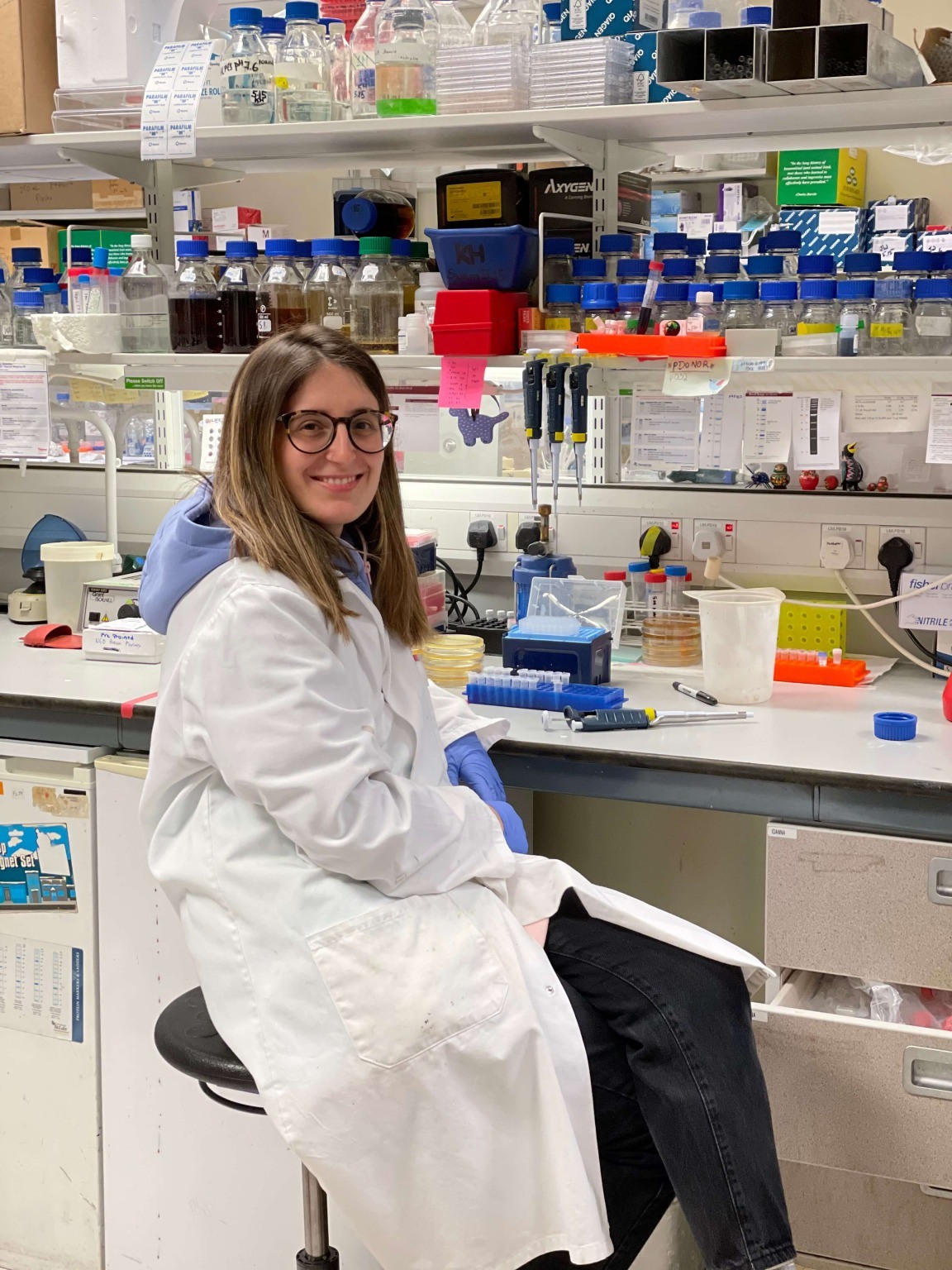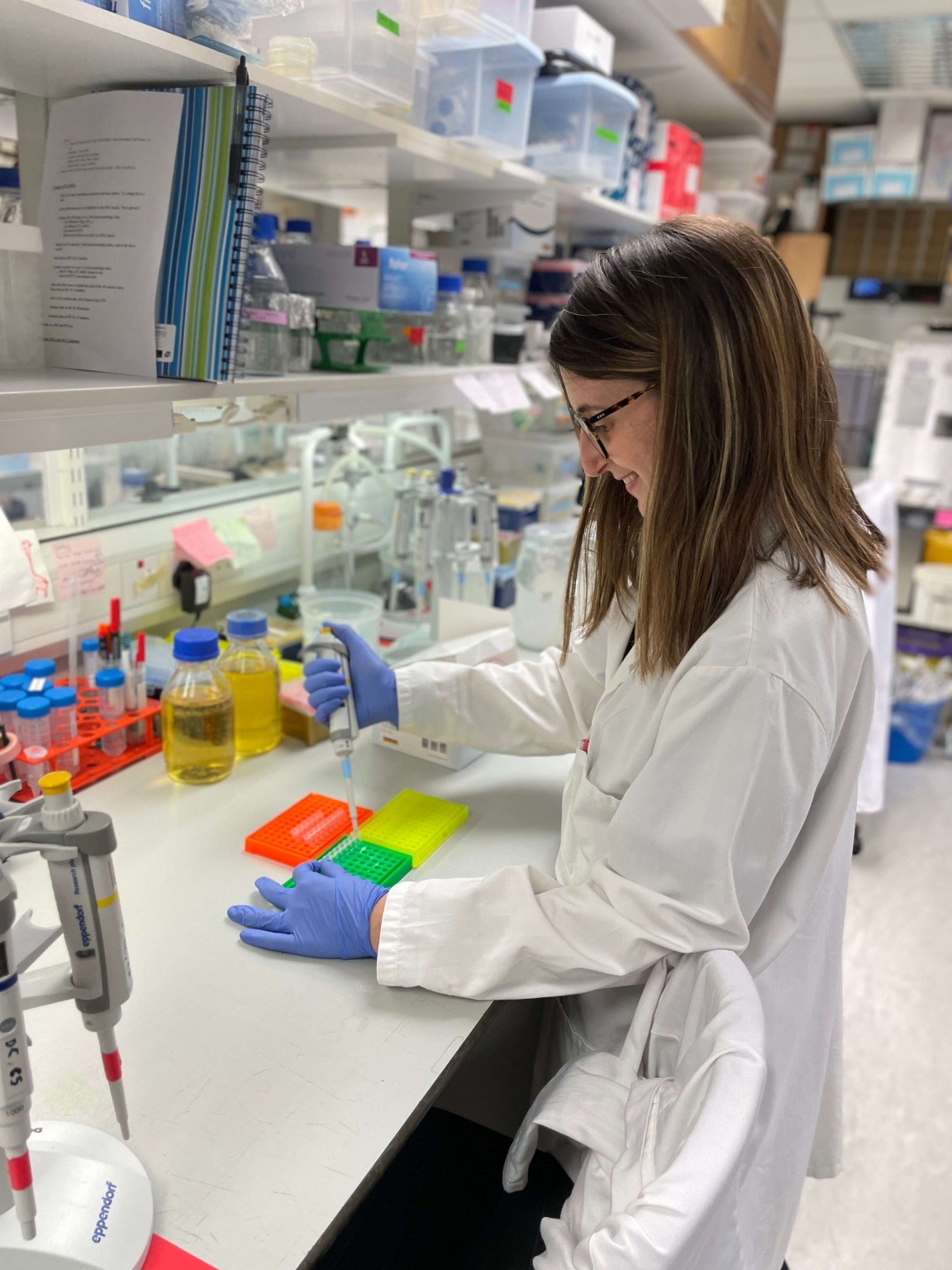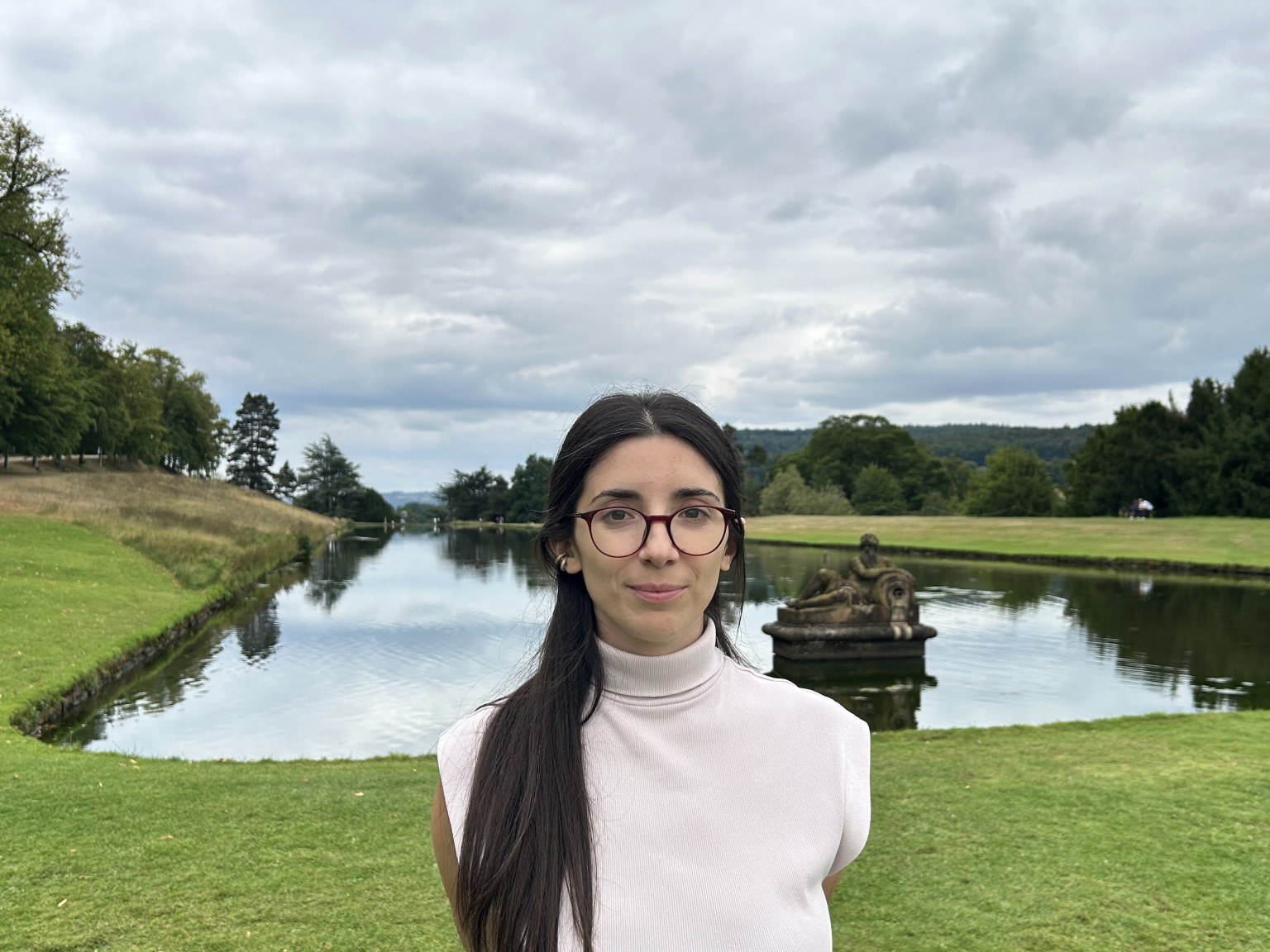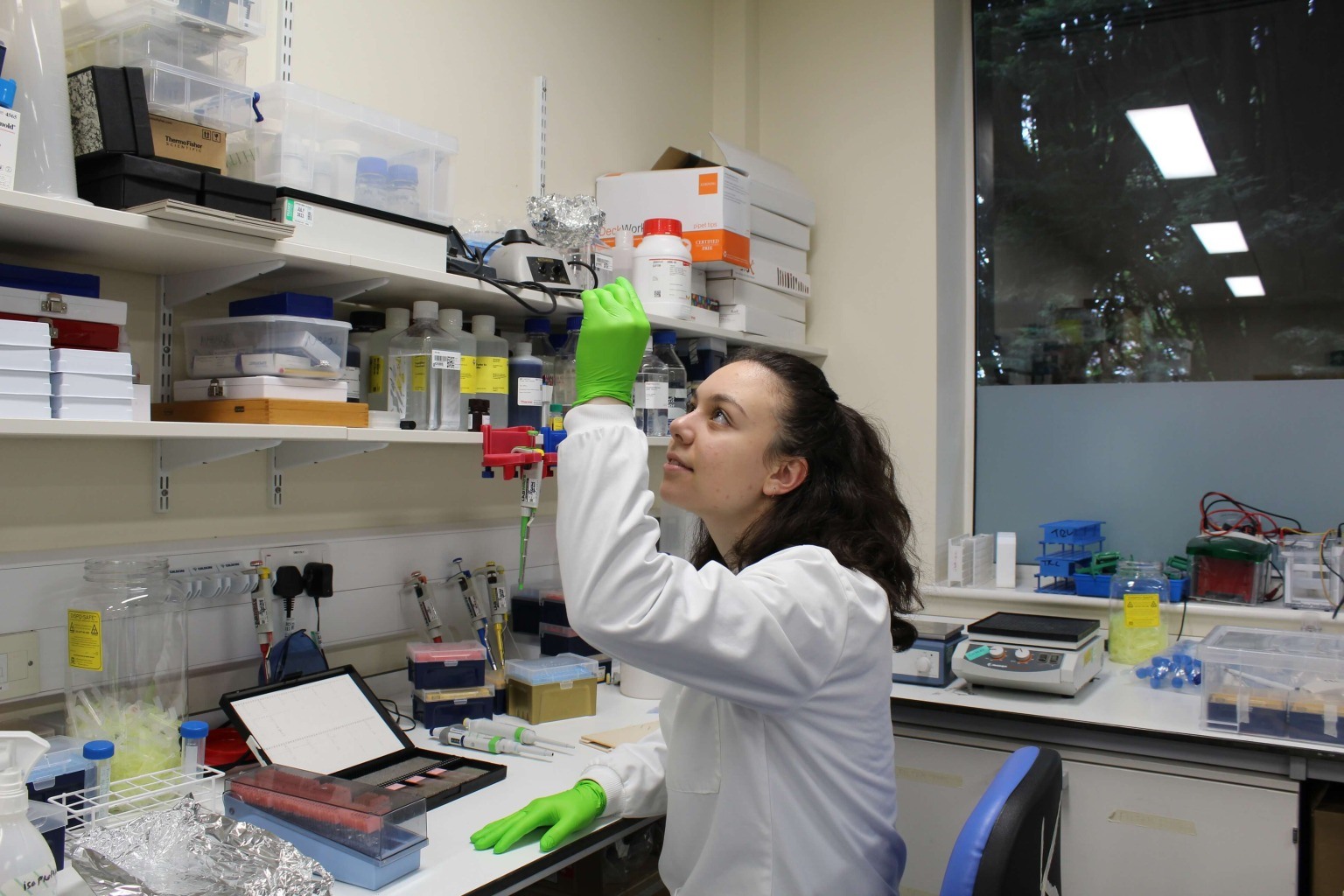
Prof. Athena Vakali: Shaping human-centered AI and inclusivity in STEM
Thaleia-Dimitra Doudali

Magazine / Interviews , Science
Ioanna is a Postdoctoral Researcher at the Institute for Cell Biology at the University of Edinburgh, where she also conducted her doctoral studies. During the PhD, she focused on chromosome segregation during mitosis and developed a synthetic approach called “SynCheck” [1]. She studied Biology at the Aristotle University of Thessaloniki. Afterward, she continued her studies in Molecular and Cellular Biology at the University of Pierre and Marie Curie in Paris. Ioanna spoke to Greek Women in STEM about her research and her career path but also her work in Science Communication.

Why did you decide to focus on Molecular and Cellular Biology? Could you describe in short what each subfield is about?
Since the very beginning of my studies, I have always been curious about how different living organisms work. But to understand this, we need to focus on the functions of different cells in each organism. The cells are the basic and fundamental structural and functional units of every living matter. Each cell type has specific functions. A change inside the cells could lead to the loss of function of these cells, which is normally the cause for several diseases. This is what intrigued me the most: to be able to ‘see’ inside a cell. Οne course during the undergraduate degree reinsured me that this is the field of Biology that I would like to focus on: Molecular and Cellular pathways implicated in human diseases. I still have this vivid memory, going out of the class and saying this is exactly what I would like to do. Well, distinguishing between Molecular and Cellular Biology is not always easy. Simply, Cell biology is the field of science that studies living cells. In contrast, molecular biology is the field of study that studies the central dogma of life. This includes DNA, RNA, and protein synthesis. In order to analyze the behavior of a living organism, it is important to understand the cell behavior as well as the genetic pattern. Therefore, both cell and molecular biology are crucial and are also the reason why we find them very closely connected.
What are the main areas of your current research?
I am currently working as a postdoctoral researcher in the Institute of Cell Biology at the University of Edinburgh. For many years, I have been focusing on a specific stage of cell division called mitosis. Mitosis is one of the most important steps of cell division, as during mitosis, the chromosomes are segregating. It is very important that the chromosomes be segregated correctly in order to produce cells with the correct number of chromosomes. Chromosome missegregation could have dramatic consequences for the organisms as it could lead to miscarriages, infertility birth defects and is also a characteristic of cancer. More specifically, my research focuses on a particular pathway called the mitotic spindle assembly checkpoint. The spindle checkpoint is a surveillance system that ensures proper chromosome segregation. I like to link this pathway to an on-off switch system. When mistakes happen during mitosis, the pathway is ON and prevents chromosome segregation until all ‘mistakes’ are corrected. When the mistake is corrected, the pathway is ‘satisfied’, it is ‘happy’ and permits chromosome segregation and mitotic progression. This pathway has been studied in different organisms from several groups around the world, as its components could be potential candidates for drug therapies against cancer.
Let’s talk a bit more about pathways. What are they and why one should study them?
A biological pathway is a series of actions among molecules in a cell that leads to a certain product or a change in the cell. It can trigger the assembly of new molecules, such as fat or protein, turn genes on and off, or spur a cell to move. Biological pathways normally include different proteins working together. Researchers are constantly learning that biological pathways are far more complicated than once thought. Most pathways do not start at point A and end at point B. In fact, many pathways have no real boundaries, and multiple pathways often work together to accomplish tasks. When multiple biological pathways interact with each other, they form a biological network. For example, the spindle assembly checkpoint pathway, the one that my research focuses on, was identified in 1970. Since then, the pathway has been extensively studied, but even today, there are still things that we don’t understand and don’t know. This is what makes the research of the pathways ‘magical’ and our studies endless.
Your latest research is on cryptococcus. Could you explain its function and the significance of studying it?
We study chromosome segregation using Cryptococcus neoformans as a model system. Cryptococcus neoformans is an opportunistic pathogen that causes life-threatening pneumonia and meningitis and is the 5th leading cause of death in immunocompromised patients. Upon infection, cryptococcus cells can grow in size and form very big cells called "titans". Titan cells are much bigger compared to normal cells and contain more DNA than a normal cell. Consequently more copies of some chromosomes. By studying chromosome segregation in this organism, we aim to understand how titan cells gain more chromosomes and which molecular pathways are involved in this process in an attempt to find potential candidates for future drug treatments.
I think one of the most important things that the pandemic revealed was how essential it is for science to be communicated accurately and precisely to the public.
Why did you decide to pursue a PhD?
A catalyst for me in order to pursue a PhD was the Erasmus program that I participated in during the last year of my undergraduate studies. As you might be aware, there are limitations on the lab experience we get during undergraduate degrees in Greece. Therefore, I applied for the Erasmus program in a laboratory in France to extend my lab skills. During the six months that I spent there, I had the time to see how research is, what the ‘life’ of a PhD student is, and what the challenges are. I also had the chance to talk with PhD students of that lab and understand whether I would like to start one. When I decided to go for it, I then I had to choose the University. My dream was to study at the University of Edinburgh, therefore, I started researching the field I was interested in. I found multiple groups that are doing excellent work. After interviews and discussions with Principal Investigators as well as the members of each group, I chose the one that I liked more, both the project and the group atmosphere. For me, apart from the project, it is always important to be in an environment where I can learn as much as possible.
You chose to build your career outside of Greece. Would you like to tell us some of the reasons that led you to this decision?
To be honest, I did not choose it on purpose. I participated in the Erasmus program, and I decided to stay in European labs. A key player behind my decision at each career stage was the funding. I am aware that there are limitations considering research funding in Greece. Some labs have a lot of funding, and labs that really struggle. Another reason was that I wanted to be exposed to different systems of research. There is always a difference in how research is conducted across different countries. I can say that being exposed already to three European countries and universities has certainly broadened my horizons a lot.
Apart from the research itself, what other aspects do you think are important to a scientist’s work?
I think one of the most important things that the pandemic revealed was how essential it is for science to be communicated accurately and precisely to the public. Around the world, many scientists work in different fields of science, and numerous studies are published every day. But how many of these findings become available to the wider public? And, even when they become available, how easily can the public understand them? Researchers tend to talk with complicated terms that are difficult to be understood by a non-specialist, even by scientists from different fields. Therefore, I believe it is now the time to learn how scientists could use simple terms to explain our science and to make sure that it is easily understood by everyone. For example, there is a very interesting TEDx talk for CRISPR[2], very inspiring for me. Science communication is significant for the researchers and the science itself. On a personal level, Science communication has improved my presentations and helped me to be more communicative with audiences of different ages, different backgrounds, and different nationalities.

What inspired you to work in Science Communication? Are you working on something new right now?
Through the years, I have participated in International Science Festivals, in school visits both in Greece and Edinburgh, and in Prison visits (making the prisoners familiar with the concepts of molecular biology and performing some experiments with them). My participation in such events and my implication in general with science communication was accidental. In the very first year of my PhD, I was approached by the Science communication Officer of the Welcome Trust Centre of Cell Biology to ask me whether I would like to participate as a volunteer in some events. I still remember the first event that I participated in, the smiles of the people, the questions they asked, the surprise on their faces, and the rewarding expressions after the explanations (when everything started to make sense). From that moment onwards, this interaction with the public was a driving force for me to participate in more and more events and to become as creative as possible. Thereafter, I participated in a project in which we made glass pieces inspired by my research. These glass pieces have been used since for explaining my research topics to students during school visits. I also have participated in the comic “Attack of the Titans”. You can read the story and the science behind it.
Right now.. that’s a good point! The whole COVID situation made science communication difficult, as there were limitations on the approaches we had available. So most of the things that we are working on right now are online. Currently, we are trying to build an animation in which we explain our science, and it will be uploaded on YouTube, accessible for anyone to watch or even use to explain scientific facts. I hope it works! We are still in the beginning!
Connect with Ioanna on LinkedIn.
Sources:
[1] Leontiou et al., The Bub1-TPR Domain Interacts Directly with Mad3 to Generate Robust Spindle Checkpoint Arrest, Current Biology , REPORT, VOLUME 29, ISSUE 14, P2407-2414.E7, JULY 22, 2019
[2] Jennifer Doudna, How CRISPR lets us edit our DNA

Thaleia-Dimitra Doudali

Danai Korre


Katerina Britzolaki